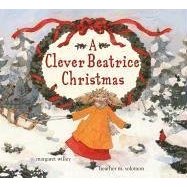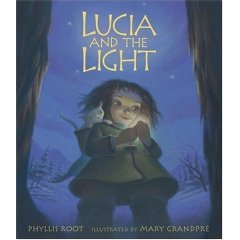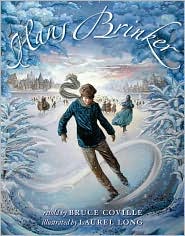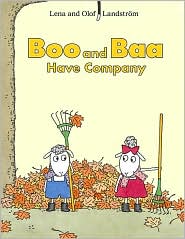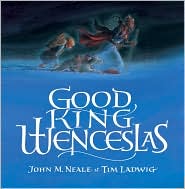 Good King Wenceslas; original carol by John M. Neale; illustrated by Tim Ladwig (Eerdmans Books for Young Readers, 2005).
Good King Wenceslas; original carol by John M. Neale; illustrated by Tim Ladwig (Eerdmans Books for Young Readers, 2005).
"Good King Wenceslas look'd out
on the feast of Stephen,
when the snow lay round about,
deep and crisp and even."
Ladwig, working in watercolor, liquid acrylic, and oil on paper, beautifully illustrates Neale's carol about the tenth-century Bohemian king who goes out with his page to give alms to a peasant on St. Stephen's Day (the second day of Christmas, December 26). I like Ladwig's framing device, a little boy looking at the statue of Wenceslas in Prague and "imagin[ing] a long time ago..."; the same little boy (and his dog) appears in the story as Wenceslas's page. A "Historical Note" at the back of the book tells us that Neale wrote the carol in 1853 to inspire children to be generous on St. Stephen's Day: it's not too late!
See this article in Wikipedia for the full text of the carol and notes on its form (it was set to the melody of a thirteenth century Swedish spring song). There is also another picture book about Wenceslas by Geraldine McCaughrean (whose work I very much like); illustrated by Christian Birmingham (Transworld, 2007); this one appears to be a prose retelling of the Wenceslas legend.
[Leo is finally interested in knights, kings, and castles, much to the delight of his medievalist mother (me); he especially liked Ladwig's warm illustrations of the castle interiors.]

